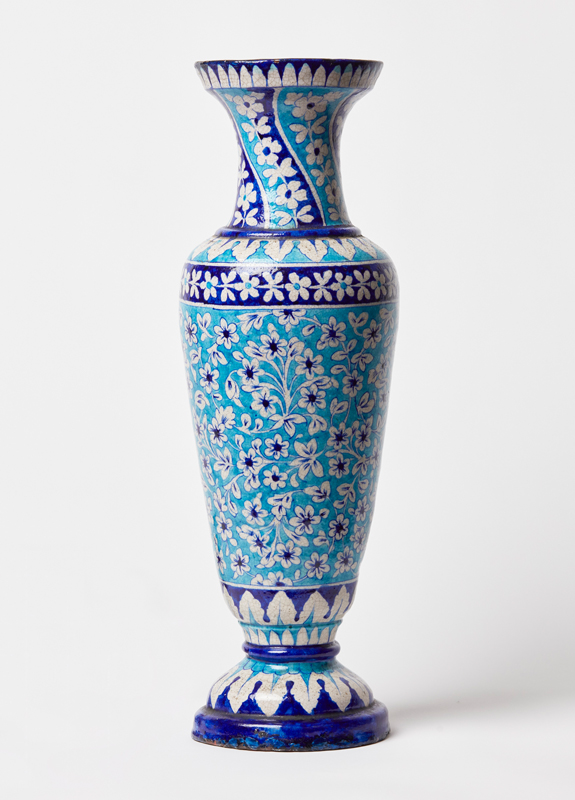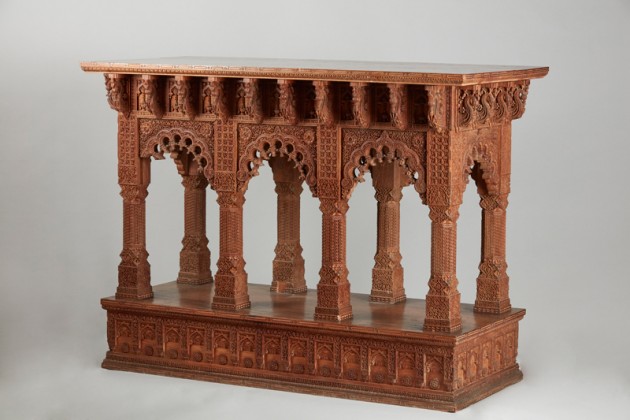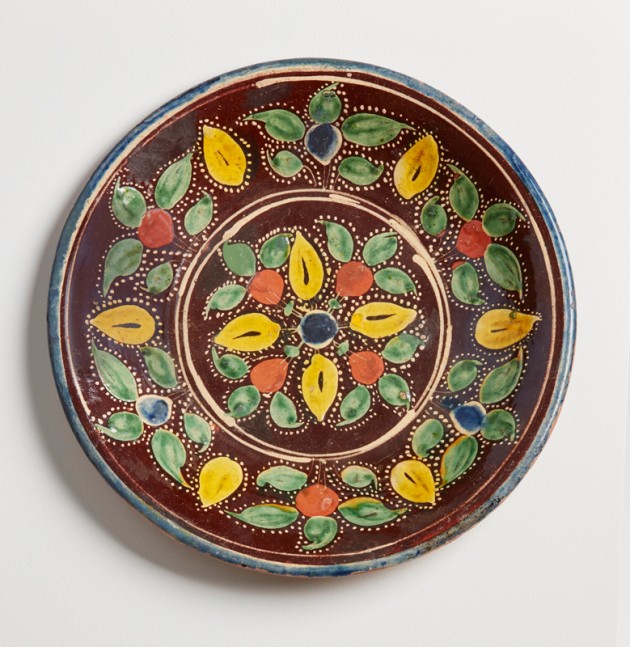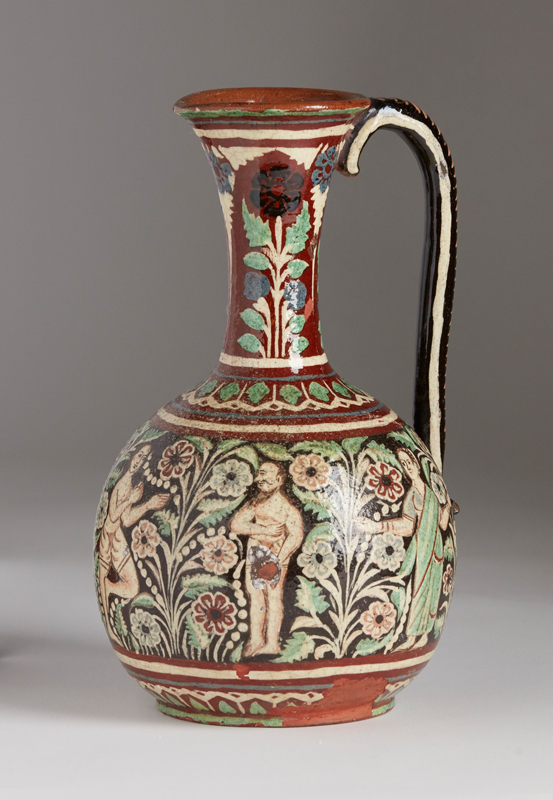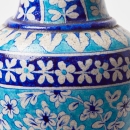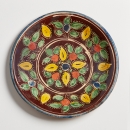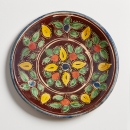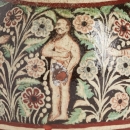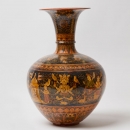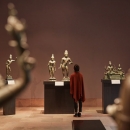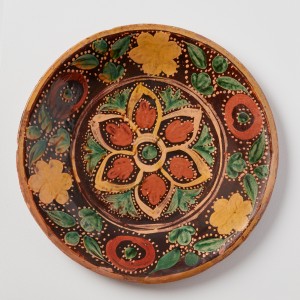In Search of New Markets: Craft Traditions in Nineteenth-Century India
Monumental stone sculpture, metal shrines, votive objects, painted textiles, manuscripts and so-called “miniatures” from South Asia offer visitors to the Museum’s lower-level galleries a rich overview of the region’s art history. The vast majority of these works were created for religious or courtly settings, whether in Buddhist, Hindu, Jain or Islamic cultural contexts. The objects on display for In Search of New Markets, by contrast, were created for commercial purposes. This exhibition, which marks the first time that several of these works have been on view at the Museum, explores the historical sources and practices that informed the production of ceramics and wooden furniture in colonial India. It also reveals the distinctly modern modes of promotion and distribution that were used to generate demand for them.
The ceramic vessels in the exhibition reveal points of connection—and tension—between established Indian art forms and the commercial ambitions of colonial administrators and Indian artists trying to find new buyers for this work. While earthenware cups and bowls have a long history in India, they have often been regarded as a disposable alternative to metal utensils, left unembellished and discarded after use. The glazed ceramics produced in South Asia were predominantly tiles used to adorn mosques or tombs. Demand for them tapered as the number of Indian patrons who could fund such architectural projects waned. The city of Multan, in what is now Pakistan, was once a center for the production of blue and white architectural tile. By 1883, a commentator writing for the Journal of Indian Art remarked instead on the wide variety of flowerpots and vases that were for sale there, in forms that “neither the Potter in India nor his ancestors in Persia ever conceived.” The blue and white decoration of an ornamental vase created around 1880 exemplifies the palette and style of floral decoration that characterize Multan tile, whereas the vessel’s shape and size correspond with the new forms produced for European buyers. SHOW MORE

